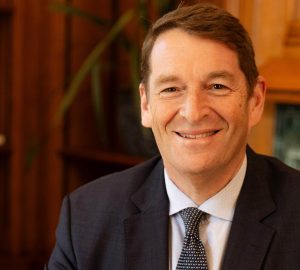SA’s young population and changing lifestyles drive shift to sectional title homes
A predominantly young and rapidly urbanising population is contributing towards a growing demand for sectional title residential properties in South Africa, particularly in the major metropolitan areas and key commercial hubs, says Dr Andrew Golding, chief executive of the Pam Golding Property group.
Says Dr Golding: “Encouragingly, developers are responding to the demand for sectional title living – with the percentage of flats and townhouses rising from just under 26% of total residential building plans passed in 2010 to 47% in 2022, after a brief dip in the early years of Covid.
SOURCE: Statistics South Africa
“For young buyers and other first-time home purchasers, smaller properties are appealing because they are more affordable, but increasingly the demand for sectional title is also being driven by lifestyle choices, as younger generations typically prefer secure, lock-up-and-go properties.
“This is reinforced by the new trend towards shared spaces, with micro private units in a development with co-working and co-living, shared spaces. Not only does this make property ownership more affordable but it also creates a sense of community which has been lost to a large degree in traditional suburban areas amidst security concerns.
“Furthermore,” says Dr Golding, “while the pandemic and ensuing lockdowns temporarily reversed the shift to sectional title homes – as the freedom to work-from-home prompted many to purchase freehold homes in peripheral suburbs and holiday or retirement towns, the longer-term trend to sectional title residences has since reasserted itself.
“A contributory factor towards the shift to sectional title homes is the availability of surplus office space in business nodes in the post-Covid era, thereby providing new opportunities for conveniently located residential developments.
“These may be both high-end – such as in Cape Town’s central city – but also the more affordable market, for example, Johannesburg CBD with areas such as Jewel City where commercial buildings are converted into mixed-use precincts offering pedestrianised access to retail outlets, outdoor space, rental accommodation and close proximity to work.”
Dr Golding says while the choice between freehold and sectional title is often dictated by life stage – such as a preference for a suburban freehold home while raising a family – or conversely ‘empty-nesters’ downscaling or planning for retirement – there appears to be an underlying shift across generations towards low-maintenance, sectional title living – given security and cost considerations.
“This trend is most evident in the growing proportion of sectional title homes in new unit sales. In 2010, 20.5% of all new homes sold in South Africa were sectional title. By the first quarter of 2022, this had risen to 36.1% (latest available Lightstone statistics) of all new homes sold.
“However, South African housing stock still remains predominantly freehold, and, according to Lightstone, there are approximately seven million residential properties in South Africa, of which 80.4% are freehold, while just 12.4% are sectional title properties, and estates account for the balance of 7.2%.
“The total value of all these residential properties is R6.7 trillion, with freehold properties accounting for 64.9% of the total sum, sectional title comprising 20.1%, and estates accounting for 14.9% of total value. The anomaly whereby freehold’s share of the total volume is considerably greater than its share of total value, presumably reflects the fact that many of the freehold properties are in the more affordable market sector where the vast majority of South Africans live.
“While all four of the major regions have experienced a shift towards sectional title properties over the past 12 years, the change has been the most pronounced in KwaZulu-Natal, which has a historical bias towards sectional title living, particularly as much of the development is along the coast where land is scarce and more expensive.” (Chart below shows flats and townhouses as a percentage of the total number of building plans passed from 2010 to 2022.)
SOURCE: Statistics South Africa
| ST % total number plans passed | 2012 | 2022 | Change |
| Gauteng | 28.1 | 48.9 | +20.8 |
| Western Cape | 21.0 | 43.8 | +22.8 |
| KwaZulu-Natal | 42.8 | 72.6 | +24.3 |
| Eastern Cape | 28.8 | 29.6 | +0.8 |
Adds Dr Golding: “Interestingly, while growth in freehold house prices continued to slow to +2.5% in June 2023 (according to Lightstone statistics), sectional title house price inflation gathered momentum, rising to +2.9% in June and exceeding freehold house price inflation for the first time since late-2004.
SOURCE: Lightstone
“Notably, smaller two-bedroom freehold house prices have rebounded by +4.6% in June 2023, while smaller two-bedroom sectional title house price inflation continues to gather momentum, increasing by +3.4% in June.”
SOURCE: Pam Golding Residential Property Index
For further information visit www.pamgolding.co.za
Posted by The Know - Pam Golding Properties









